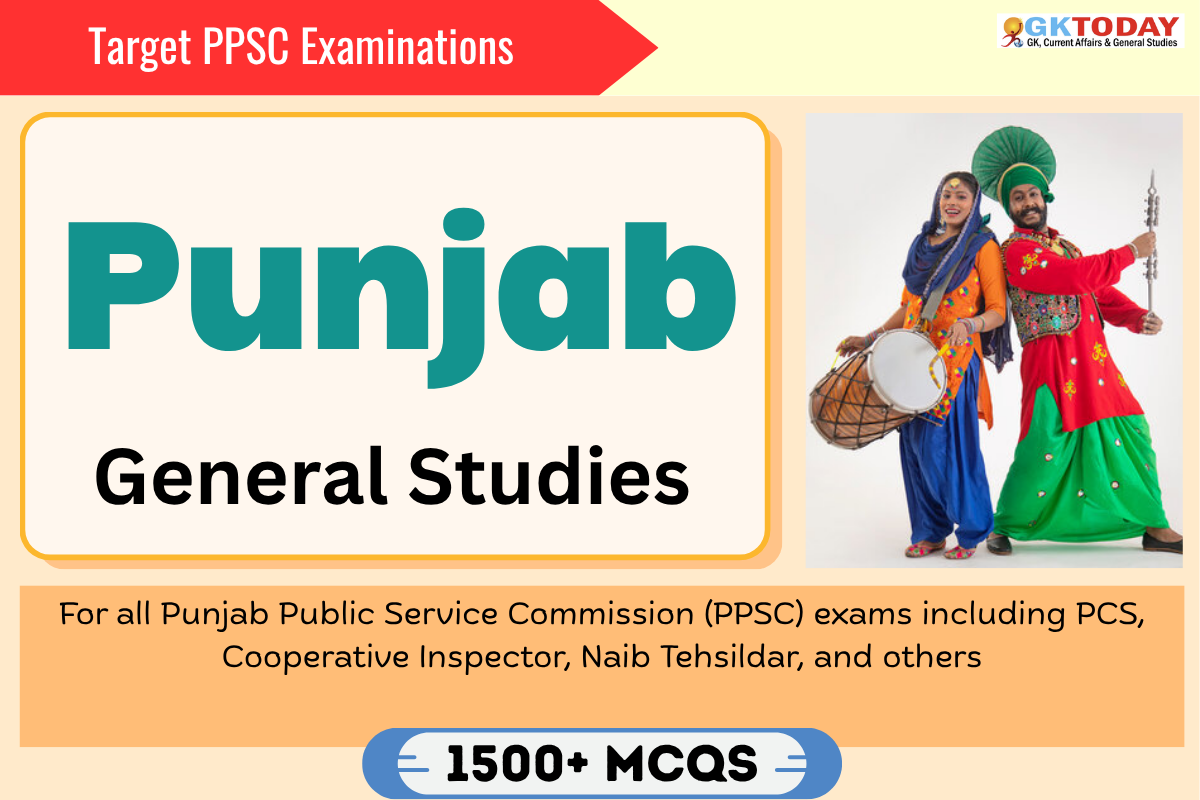States PCS: Punjab GK Questions for PPSC Examinations
For all Punjab Public Service Commission (PPSC) exams including PCS, Cooperative Inspector, Naib Tehsildar, and others.
31. Ram Tirth temple is located in which city of Punjab?
[A] Bathinda
[B] Jalandhar
[C] Amritsar
[D] Patiala
Show Answer
Correct Answer: C [Amritsar]
Notes:
Ram Tirth is an ancient temple near Amritsar, Punjab, associated with Sage Valmiki; other famous temples include Bhagwati Mandir (Bathinda), Sodal Mandir (Jalandhar), and Kali Devi Temple (Patiala).
32. Who led the Punjabi Suba Movement for a Sikh-majority state?
[A] Master Tara Singh
[B] Bhagat Singh
[C] Jawaharlal Nehru
[D] Gopal Singh Khalsa
Show Answer
Correct Answer: A [Master Tara Singh]
Notes:
Master Tara Singh, prominent Akali Dal leader, spearheaded the Punjabi Suba Movement to create a Sikh-majority, Punjabi-speaking state. The movement resulted in the formation of Punjab in 1966 after the division of the erstwhile state on linguistic lines.
33. Who led the Punjab Suba Movement for a Punjabi-speaking state?
[A] Bhagat Singh and Lala Lajpat Rai
[B] Giani Zail Singh and Pratap Singh Kairon
[C] Tara Singh and Fateh Singh
[D] Master Tara Singh and Harcharan Singh
Show Answer
Correct Answer: C [Tara Singh and Fateh Singh]
Notes:
Punjab Suba Movement, led by Tara Singh and Fateh Singh, demanded a Punjabi-speaking state. The Punjab Reorganisation Act of 1966 resulted in Punjab, Haryana, and Himachal Pradesh. The movement was rooted in linguistic and cultural identity, distinct from other leaders’ roles in Punjab’s history.
34. Since which year is Punjab Assembly located in Vidhan Bhawan?
[A] 1956
[B] 1961
[C] 1972
[D] 1980
Show Answer
Correct Answer: B [1961]
Notes:
Punjab Legislative Assembly shifted to Vidhan Bhawan, Chandigarh, in 1961. The Assembly has 117 members and is housed in the iconic Le Corbusier-designed building. Its core functions are legislative, financial, and oversight, and it is presided over by the Speaker of the Assembly.
35. Which Punjab district is linked to the 1705 Battle of Muktsar?
[A] Muktsar Sahib
[B] Fazilka
[C] Faridkot
[D] Firozpur
Show Answer
Correct Answer: A [Muktsar Sahib]
Notes:
The Battle of Muktsar was fought in 1705 in Muktsar Sahib, Punjab, between Guru Gobind Singh Ji’s forces and Mughal troops. This district commemorates the battle with a significant Sikh pilgrimage, marking the martyrdom and valor of the forty liberated warriors (“Chali Mukte”).
36. Which river forms the northern boundary of Ludhiana district in Punjab?
[A] Sutlej River
[B] Beas River
[C] Ghaggar River
[D] Ravi River
Show Answer
Correct Answer: A [Sutlej River]
Notes:
Sutlej River marks Ludhiana district’s northern boundary in Punjab. Other important rivers are Beas, Ghaggar, and Ravi, all flowing through Punjab. Ludhiana is an industrial hub, and the Sutlej is crucial for irrigation, supporting regional agriculture and canal systems like Sirhind and Bhakra canals.
37. Who wrote the Punjabi epic poem Heer Ranjha?
[A] Waris Shah
[B] Sultan Bahu
[C] Guru Gobind Singh Ji
[D] Ali Haider
Show Answer
Correct Answer: A [Waris Shah]
Notes:
Heer Ranjha is a classic Punjabi epic poem written by Waris Shah in 1766. Waris Shah, a celebrated Punjabi Sufi poet, immortalized the folk love story through his poetry. Other listed personalities did not write this epic.
38. Which dialect is the basis of Eastern Punjabi language?
[A] Majhi
[B] Malwai
[C] Doabi
[D] Pothohari
Show Answer
Correct Answer: A [Majhi]
Notes:
Majhi dialect forms the linguistic basis of Eastern Punjabi, prominently spoken in the Majha region, including Amritsar and Gurdaspur. Eastern Punjabi is generally written in Gurmukhi script. This dialect is considered the standard for literary and official works in Punjab, India.
39. What is the traditional headgear of Punjabi men called?
[A] Pagdi
[B] Turban
[C] Topi
[D] Rumal
Show Answer
Correct Answer: A [Pagdi]
Notes:
Pagdi is the traditional headgear of Punjabi men, symbolizing honor and cultural identity. Worn on special occasions and daily life, the pagdi varies in style and fabric across regions of Punjab. It should not be confused with rumal, topi, or other regional headgear.
40. Which Gharana founded by Fateh Ali Khan & Ali Baksh Khan is from Punjab?
[A] Gwalior Gharana
[B] Kirana Gharana
[C] Agra Gharana
[D] Patiala Gharana
Show Answer
Correct Answer: D [Patiala Gharana]
Notes:
Patiala Gharana, founded in late 19th century by Fateh Ali Khan and Ali Baksh Khan, is renowned for its intricate taans and layakari. It is the most prominent Hindustani classical Gharana from Punjab, influencing thumri, khayal, and ghazal traditions in North India.

